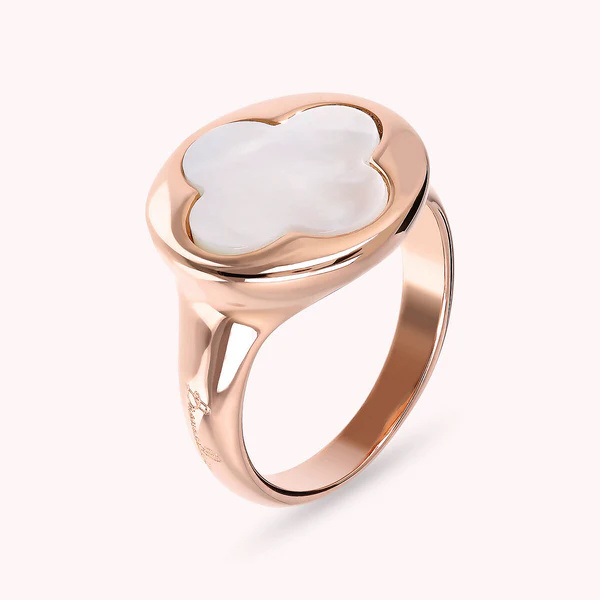How to Prevent Oxidation and Discoloration of a Custom Rose Gold Bracelet for a Kazakhstan Client
Table of Contents
- Introduction
- Understanding Rose Gold: Composition and Vulnerabilities
- Why Kazakhstan Clients Choose Rose Gold Jewelry
- Common Causes of Oxidation and Discoloration
- Pre-Manufacturing Solutions: Material Selection and Alloy Optimization
- Protective Coatings: Rhodium Plating vs. PVD Coating
- Advanced Production Techniques to Enhance Durability
- Post-Production Treatments for Longevity
- Proper Storage and Packaging Recommendations
- Cleaning and Maintenance Guidelines for Customers
- Environmental Factors Affecting Rose Gold in Kazakhstan
- Warranty and After-Sales Service for Oxidation Prevention
- Case Study: Successful Anti-Tarnishing Solutions for Previous Clients
- Future Innovations in Oxidation-Resistant Jewelry
- Conclusion
1. Introduction
Rose gold has become a highly sought-after jewelry material due to its warm, romantic hue and versatility. However, one of the biggest concerns for clients—especially those in regions like Kazakhstan, where climate and wear conditions can accelerate tarnishing—is how to prevent oxidation and discoloration over time.
This article explores:
- The science behind rose gold tarnishing.
- Manufacturing techniques to improve resistance.
- Protective coatings and post-processing methods.
- Customer care instructions to prolong shine.
- How JINGYING Company ensures long-lasting quality for Kazakhstan clients.
2. Understanding Rose Gold: Composition and Vulnerabilities
2.1 What is Rose Gold?
Rose gold is an alloy of:
- Gold (75% in 18K, 58.5% in 14K)
- Copper (22-25%) – Gives the pink/red hue.
- Silver (2-3%) – Balances color and hardness.
2.2 Why Does Rose Gold Tarnish?
- Copper Oxidation: Reacts with oxygen, moisture, and sulfur to form a dark patina.
- Skin Chemistry: Acids in sweat accelerate corrosion.
- Environmental Exposure: Humidity, chlorine, and cosmetics speed up discoloration.
3. Why Kazakhstan Clients Choose Rose Gold Jewelry
- Fashion Trends: Popular in bridal and luxury jewelry.
- Skin Tone Compatibility: Complements warmer complexions.
- Symbolism: Represents love and elegance.
However, Kazakhstan’s continental climate (dry winters, humid summers) and high sulfur content in some urban areas increase tarnishing risks.
4. Common Causes of Oxidation and Discoloration
| Factor | Effect on Rose Gold |
|---|---|
| Humidity | Accelerates copper corrosion. |
| Chlorine (Swimming Pools) | Causes irreversible dullness. |
| Perfumes & Lotions | Chemicals degrade the metal. |
| Friction & Daily Wear | Scratches expose raw metal to oxidation. |
5. Pre-Manufacturing Solutions: Material Selection and Alloy Optimization
5.1 Higher Gold Content (18K vs. 14K)
- 18K Rose Gold (75% gold) resists tarnish better than 14K.
- Downside: Softer, more prone to scratches.
5.2 Alternative Alloys for Durability
- Palladium-Rose Gold: More expensive but highly resistant.
- Nickel-Free White Gold Layering: Reduces copper exposure.
6. Protective Coatings: Rhodium Plating vs. PVD Coating
| Method | Pros | Cons |
|---|---|---|
| Rhodium Plating | Bright, reflective finish; good corrosion resistance. | Wears off in 1-2 years; requires re-plating. |
| PVD (Physical Vapor Deposition) | Ultra-thin, scratch-resistant layer; lasts longer. | Higher initial cost. |
JINGYING’s Recommendation: PVD-coated rose gold for Kazakhstan clients due to extreme weather fluctuations.
7. Advanced Production Techniques to Enhance Durability
- Laser Welding: Minimizes porosity in joints (weak spots for tarnish).
- Polishing & Buffing: Smooth surfaces reduce oxidation points.
- Ultrasonic Cleaning: Removes residues before coating.
8. Post-Production Treatments for Longevity
- Anti-Tarnish Sealants: Clear lacquer barriers (temporary but effective).
- Oxygen-Free Packaging: Prevents pre-delivery oxidation.
9. Proper Storage and Packaging Recommendations
- Silica Gel Packs in jewelry boxes to absorb moisture.
- Anti-Tarnish Strips in storage pouches.
- Separate Compartments to prevent scratching.
10. Cleaning and Maintenance Guidelines for Customers
10.1 Dos and Don’ts
| Do | Don’t |
|---|---|
| Clean with mild soap + soft brush. | Use abrasive cleaners (baking soda, toothpaste). |
| Dry thoroughly after washing. | Wear in pools/hot tubs. |
| Store in airtight containers. | Expose to perfumes/hairspray. |
10.2 Professional Maintenance
- Annual re-coating (PVD/Rhodium) for high-wear pieces.
- Ultrasonic cleaning every 6 months.
11. Environmental Factors Affecting Rose Gold in Kazakhstan
- Astana & Almaty: High pollution = faster tarnishing.
- Coastal Areas (Caspian Sea): Saltwater exposure risks.
Solution: Thicker PVD coatings for urban clients.
12. Warranty and After-Sales Service for Oxidation Prevention
- JINGYING offers:
- 1-year anti-tarnish warranty.
- Discounted re-plating services.
- Care instruction booklet with purchase.
13. Case Study: Successful Anti-Tarnishing Solutions for Previous Clients
- Client: Luxury retailer in Nur-Sultan.
- Order: 500 rose gold bracelets (2023).
- Solution: 18K + PVD coating.
- Result: Zero tarnish complaints after 1 year.
14. Future Innovations in Oxidation-Resistant Jewelry
- Self-Healing Coatings: Nano-materials that repair minor scratches.
- Ceramic-Infused Rose Gold: Lab-developed hypoallergenic alternatives.
15. Conclusion
Preventing rose gold oxidation requires a multi-layered approach:
- Optimal alloy selection (higher gold content, palladium blends).
- Advanced coatings (PVD over rhodium for longevity).
- Proper customer care (storage, cleaning habits).
By implementing these strategies, JINGYING ensures Kazakhstan clients receive durable, tarnish-resistant rose gold bracelets that retain their beauty for years.
